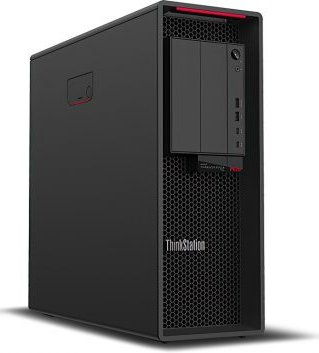 Hence for most CGE modellers a CPU from the top end of the
consumer range will offer better value. A workstation/server CPU is only needed if you need very many cores or an enormous amount of RAM.
Hence for most CGE modellers a CPU from the top end of the
consumer range will offer better value. A workstation/server CPU is only needed if you need very many cores or an enormous amount of RAM.
We are sometimes asked, what is the best sort of PC to buy for running GEMPACK simulations? Often the inquirer is running larger models and has experienced problems such as over-long solve times or shortage of memory (RAM). If your GEMPACK model solves fairly quickly (<2 minutes) and does not complain about shortage of memory, any new Windows PC will work fine [but we'd suggest at least 8 or 16GB of RAM]. If you intend to run larger GEMPACK models, the advice below may be helpful.
Modern CPUs have 4 or more processors (aka cores) in one chip. That allows you to run several simulations at once, or to speed up one simulation by using parallel processing (see below), if you have enough RAM. For value, choose the 2nd or 3rd fastest models that have plenty of on-chip L3 cache.
You can manually launch several simulations at once; for recursive dynamic models the RunDynam shell program will automate the processs. In this case, no one simulation is faster, but the total job is done sooner.
In contrast, GEMPACK 10 or later allows for parallel processing to speed up a single simulation: it splits up one simulation into separate processes. You can specify how many additional jobs (called 'servants') are created. In each case:
Hence, to take advantage of your multi-core CPU, you need ample memory.
GEMPACK 12 exploits multiple cores even if you are only running one simulation without servants: it launches multiple threads during the BLAS part of the linear solve.
When memory (RAM) is short, Windows is able to use hard disk space instead (called "paging") -- at the cost of a severe speed reduction. If your GEMPACK program is starved of RAM it will run very slowly. Also, the operating system and background processes consume quite a bit of memory. Use Task Manager, as described here to investigate how much memory is required to meet background needs and to run several simulations at once.
You need 64-bit Windows to make use of more than 4GB of RAM. As explained above, 64-bit Windows (Win64) has 3 key advantages over 32-bit Windows (Win32):
64-bit Windows is now the normal OS for home and work environments. Older 32-bit programs still run fine under 64-bit Windows. To reap the advantages above, you should have at least 8GB of RAM.
Consider also purchasing plenty of screen space -- either one very large LCD monitor, or a pair of smaller ones. This can be be a real productivity booster.
Many Intel CPUs feature "hyper-threading": the chip pretends to have twice as many cores as it really does. On a quad-core PC, Task Manager will show 8 (virtual) CPUs ! Unfortunately, there is still limited advantage in launching more than 4 simultaneous GEMPACK jobs (if you have just 4 cores).
Both AMD and Intel offer a range of workstation/server CPUs which are distinguished from their consumer grade CPUs. The workstation CPUs typically:
 Hence for most CGE modellers a CPU from the top end of the
consumer range will offer better value. A workstation/server CPU is only needed if you need very many cores or an enormous amount of RAM.
Hence for most CGE modellers a CPU from the top end of the
consumer range will offer better value. A workstation/server CPU is only needed if you need very many cores or an enormous amount of RAM.
For best performance, a 512GB or larger SSD should be installed, large enough to hold the Windows OS, programs, and currently active projects. Inactive projects may be stored on a conventional HDD.
Bragging rights:
In Feb 2021 CoPS took delivery of 4 Lenovo Thinkstation workstations, each containing a 32-core AMD Threadripper Pro CPU, 256GB of octa-channel
RAM, a 1TB SSD and a 4TB HDD. These powerful PCs can simultaneously run many large multi-period simulations.
As for desktops, you should look for 64-bit Windows with at least 8 or 16 GB of RAM and an Intel I7/I9 or recent AMD CPU.
To extend battery life, notebook manufacturers choose less power-hungry components -- which also run slower. Less memory can be installed than on a desktop. Again, notebooks often have no separate video RAM (instead borrowing some of the main RAM). Hence notebooks usually run slower than comparably-priced desktop PCs -- or cost more for the same performance. However this gap is narrowing. An I7 notebook with a 500GB SSD will run nearly as fast as its desktop equivalent. See this comparison.
Many laptops will run simulations faster when plugged into mains electricity.
Some users could halve their model's solve time simply by exploiting GEMPACK more skilfully. For example they could:
Read more about these ideas here. Other non-hardware ways to save time include:
Thinking and computer-power are indeed potential substitutes -- although to solve really big models you will need plenty of both.
Recent developments have included:
A few users of GEMPACK Releases 12 and 12.1 have reported that their simulations ran slower after upgrading to a new PC! The problem (and a solution) is described here.
Related topics:
Laptop/desktop speed comparison
Reducing Simulation Time
Condensation and Solution Speed
Not Enough Memory to Solve a Model
Measuring memory use with Task Manager
Memory Limit for GEMPACK
64-bit computing and parallel computations with GEMPACK 10
GEMPACK running slower on new PC
Go back to
GEMPACK FAQ Page